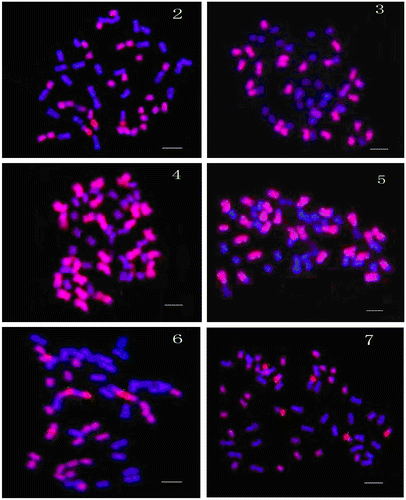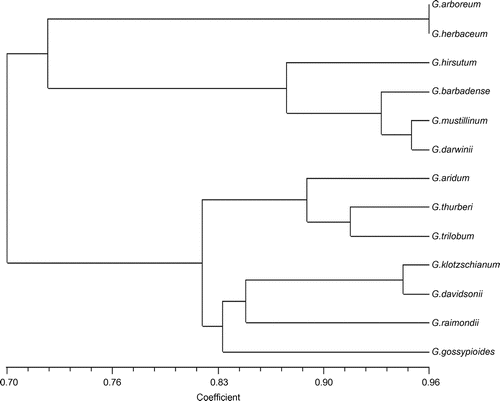Figures & data
Table 1. The details of cotton accessions used in the experiment.
Table 2. The similarity coefficient result between tetraploid species and A- and D-genome species by RAPD and SSR markers.
Figure 2-7 (Color online) GISH photographs of tetraploid cotton species (G. hirsutum and G. barbadense) with some diploid cotton species (G. arboreum, G. herbaceum and G. raimondii). (2) Target chromosomes of G. hirsutum hybridized with G. herbaceum as a probe and G. raimondii as a block (red fluorescent signals indicated those hybridized with probe and blue ones were the block, the same in other photographs). (3) Target chromosomes of G. hirsutum hybridized with G. arboreum as a probe and G. raimondii as a block. (4) Target chromosomes of G. barbadense hybridized with G. arboreum as a probe and G. raimondii as a block. (5) Target chromosomes of G. barbadense hybridized with G. raimondii as a probe and G. herbaceum as a block. (6) Target chromosomes of G. hirsutum hybridized with G. raimondii as a probe and G. herbaceum as a block. (7) Target chromosomes of G. hirsutum hybridized with G. raimondii as a probe and G. arboreum as a block. Bars in all figures = 5 μm.

